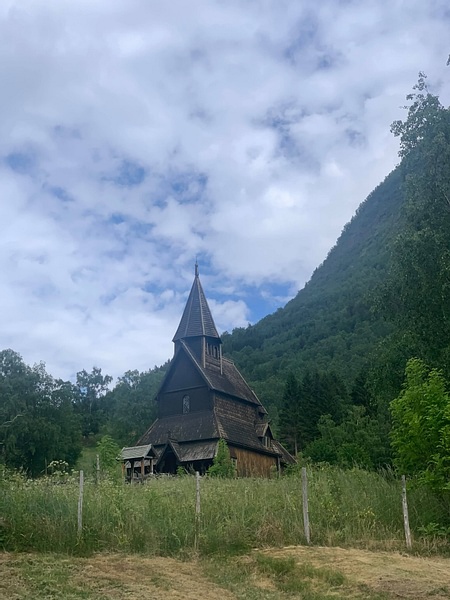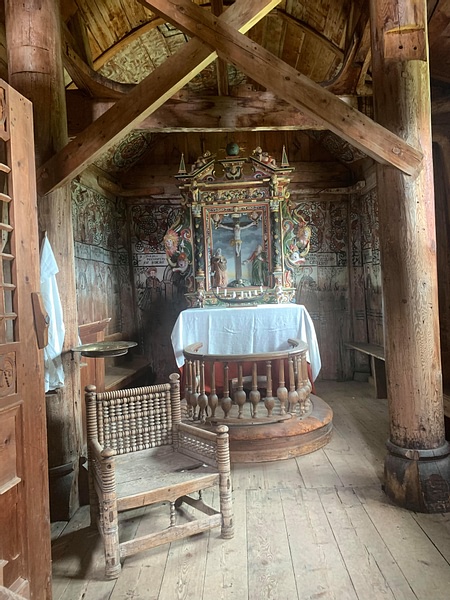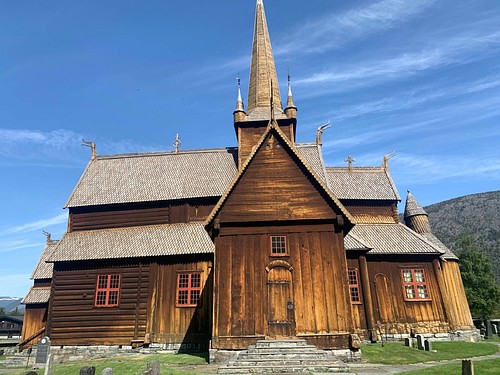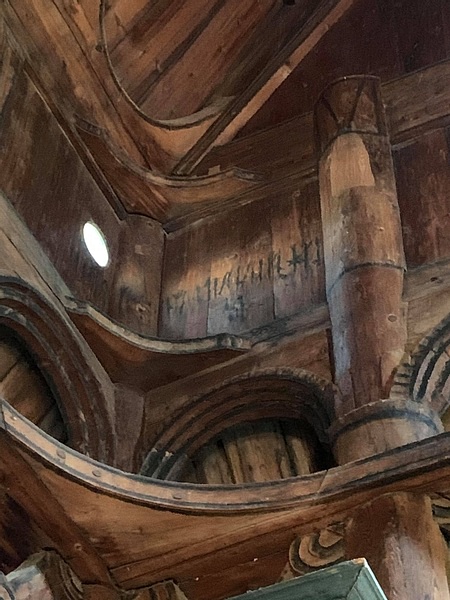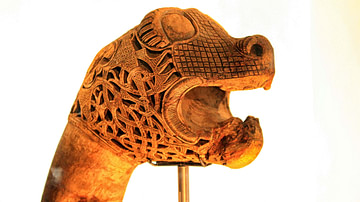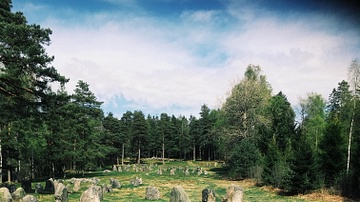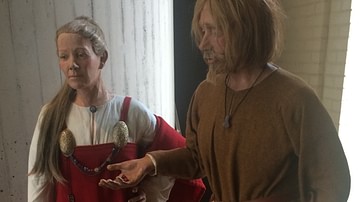Stave churches are the most famous medieval buildings in Norway and are admired for their unique architecture and beautiful decorations. They are named after the staves or masts that hold up the main structure of the church. Only 28 stave churches are still standing from over 1000 that were once scattered around the country. The churches were constructed from the beginning of the 12th century CE to 1349 CE when the Black Death arrived in Norway. They were constructed from wood and built when Christianity was still young in Norway. The churches incorporated local ancient traditions of woodcarving - for example, characteristic dragonheads - and stone architecture more common on the European continent. There were once stave churches in other parts of Northern Europe, but only in Norway can the originals still be seen. Here are some of the magnificent stave churches any visitor to Norway should visit.
Urnes Stave Church
The Urnes Stave Church is the most famous of Norway's stave churches, and it was added to the UNESCO World Heritage list in 1979 CE. It is also the oldest of the stave churches still preserved, and it is the most decorated. The church you can visit today is the last of four churches constructed at Urneset, just across the Lustrafjord from the little village of Svolvorn in western Norway. The wood that was used to construct the standing church was cut down c. 1130 CE, and the traditional method of applying tar to the wood is still used today to protect the material. The tar leaves a distinctive smell, reminding the visitor of the building's ancient heritage.
To get to the church, you will need to take a little local ferry from Svolvorn, which leaves several times a day during the summer season. You will then have a small hike up a hill. Visitors pay an entrance fee that goes to the Fortidsminneforening, the organization responsible for taking care of the unique Urnes Church and several other stave churches in Norway. A guide will provide a tour and point out the most important elements of the church.
There is a unique portal on the exterior of the north side of the church, and this was originally the entrance for one of the earlier churches from the 11th century CE. The portal is known for its beautiful wooden carvings of interlinked spirals and animals, possibly lions. Some suggest that the iconography of the carvings depicts the battle between good and evil. The carvings, based on traditional Viking art and craftsmanship, have given name to this special type of patterned decoration. It is called the Urnes style, and it can be found in other places in Scandinavia, as well as the British Isles.
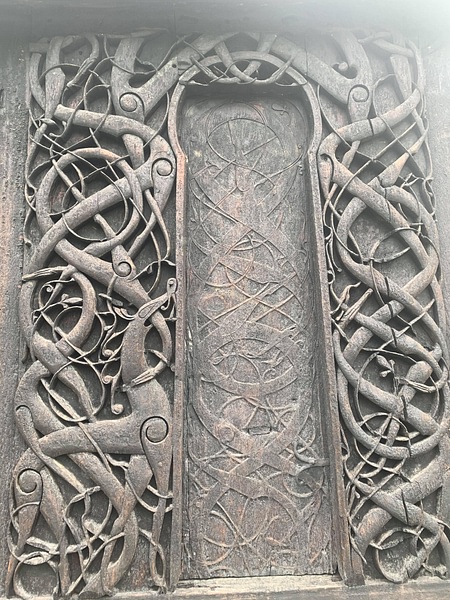
There is also much to explore inside the church as objects have been left from different periods of the church's long history. The Urnes Stave Church was expanded in the 17th century CE, and many of the artefacts and decorations are also from this era. The lid for the baptismal font, which has unfortunately disappeared, dates from c. 1250-1300 CE and is exhibited on the south wall of the church. 16 columns with cubic capitals dating from the Middle Ages (c. 476-1500 CE) have been preserved. They depict various fabulous animals, such as griffins and centaurs, and their wooden carvings are magnificent pieces of art contributing to the overall atmosphere experienced when visiting this special stave church.
Borgund Stave Church
Not far south from Urnes is the Borgund stave church. It is just over a two-hour drive, and Borgund might be the most photographed of all the stave churches, which is likely due to its many dragonhead decorations. The dragonheads are what many associate with the stave churches, and the rich decorations make this church look like a fairytale castle. The enchanting architecture of Borgund is probably why it was used as inspiration for the architectural style of the buildings and castle in Disney's Frozen movies.

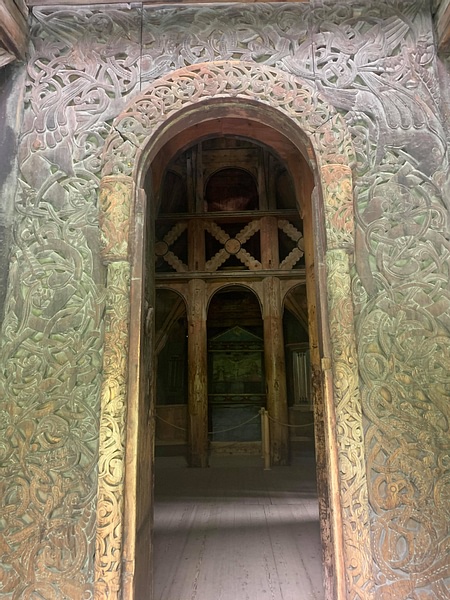
Lom Stave Church
Another one of the stave churches definitely worth visiting is Lom Stave Church. It is located in the popular tourist village of Lom, located close to the national park of Jotunheimen and Norway's highest mountain Galdhøpiggen. What makes Lom different from Urnes and Borgund is that it is still used by the local population, and this brings a livelier feeling to a church that has been standing since the second half of the 12th century CE.
On the outside, the Lom church also has some of the recognizable dragonheads and a beautiful carved wooden portal on the north side of the church. While admiring the special features of the church, it is fascinating to think about the importance this sacred building has had for the local population for over 1000 years. If the walls could talk, what stories might the church tell about the lives of the people living through the Middle Ages in the Norwegian mountains?
Lom Stave Church's interior is still richly decorated. Like most of the other stave churches, the majority of the artefacts originate from later periods and much of the Catholic interior was removed after the reformation of the Norwegian Church (1536-1537 CE). The church also underwent alteration and expansion during the 17th century CE. However, the larger part and main structure of the building is from the original church.
There are also unique traces still visible on the walls from the original builders of the church, including runes (alphabet of the Nordic people before adopting the Latin alphabet) in one of the corners of the nave close to the ceiling. The preserved “graffiti” from the 12th century CE spells out “I was here, all the way up in the corner”, and was likely left behind by a craftsman who was justifiably proud of his work.
Attentive visitors might also notice the unique painting in the ceiling over the choir dating from c. 1608 CE. The artist who depicted the baptism of Jesus in this painting is unknown, but the style is clearly inspired by Chinese art – which is quite surprising to find in a Norwegian stave church located in a remote mountain village! Needless to say, there is much to be discovered and adored by adventurous visitors who wish to explore Lom Stave Church and its surroundings.
Gol Stave Church
Gol Stave Church is another unique stave church because it can be visited in two places. In 1884 CE, the original church dating from c. 1200 CE was bought and moved to Oslo and is standing today at The Norwegian Museum of Cultural History. A replica of the original church was built in the late 20th century CE and is standing close to the church's original location in the mountain village of Gol.
Though it is a shame the church is not standing in its original location, the great thing about its replacement is that it makes it easier to visit for tourists who have less time to spend in Norway and who might only have a weekend in Oslo. The ancient church is well preserved at the open-air museum at Bygdøy, a peninsula close to the city center. Like the other stave churches, Gol Stave Church is beautifully decorated with wood carvings and dragonheads (of course), and its interior details are also magnificent to explore. After soaking up the history and architecture of the church, it is highly recommended to spend a few hours discovering the rest of the museum, which consists of several reconstructed historical buildings from all over Norway. Arguably one of the best places to learn about Norwegian history and culture, the visitor is able to travel through several different time periods simply by walking a few steps.
The replica church is also definitely worth a visit as it is easier for the visitor to feel the atmosphere of a site that has been sacred to the people of the area for centuries, and it helps to understand the church's impact on the local community. It is also part of Gordarike, a medieval family park that provides exciting adventures and experiences for the whole family.


